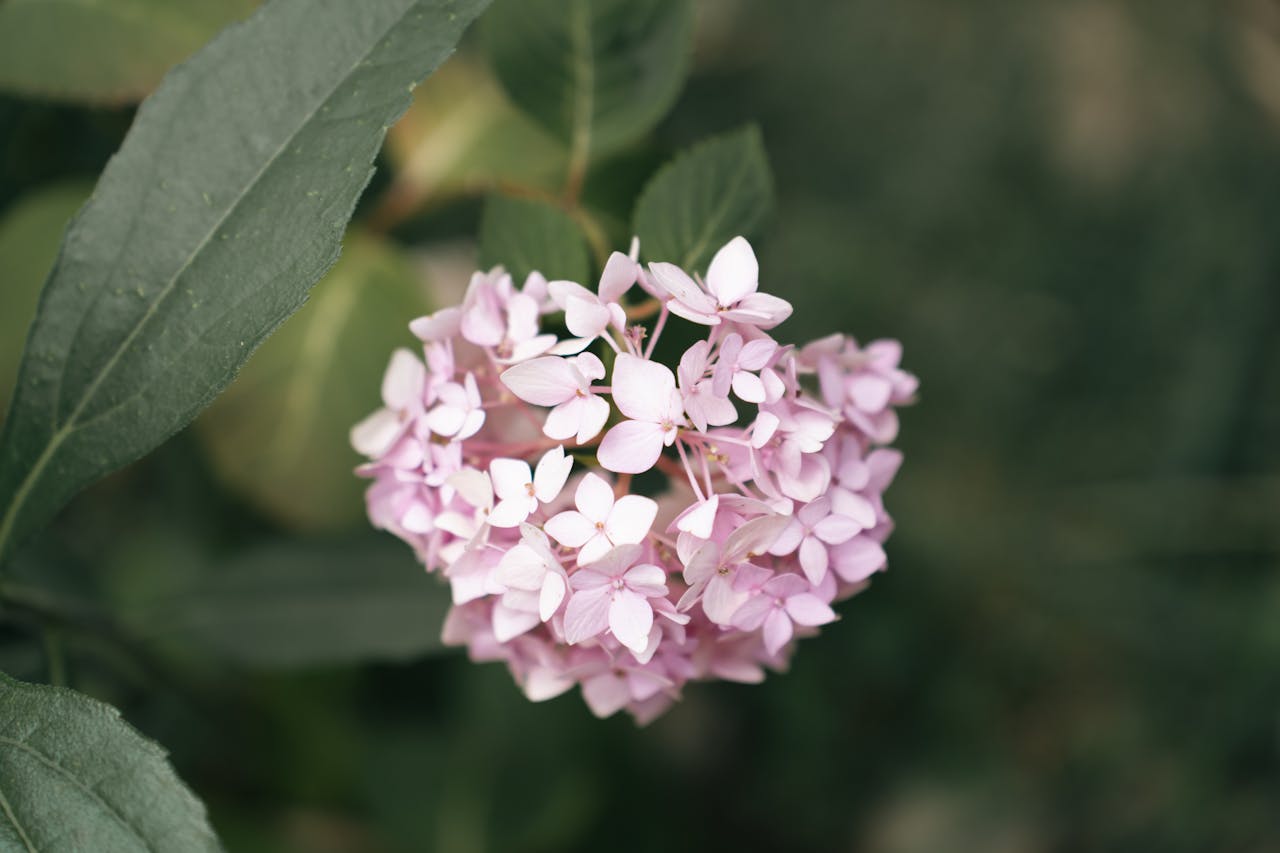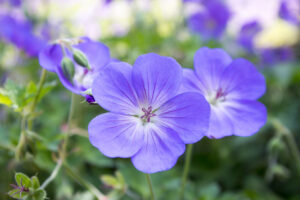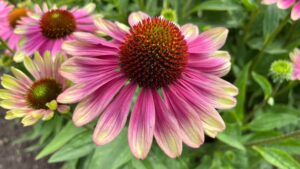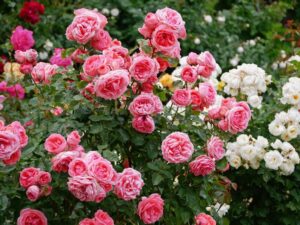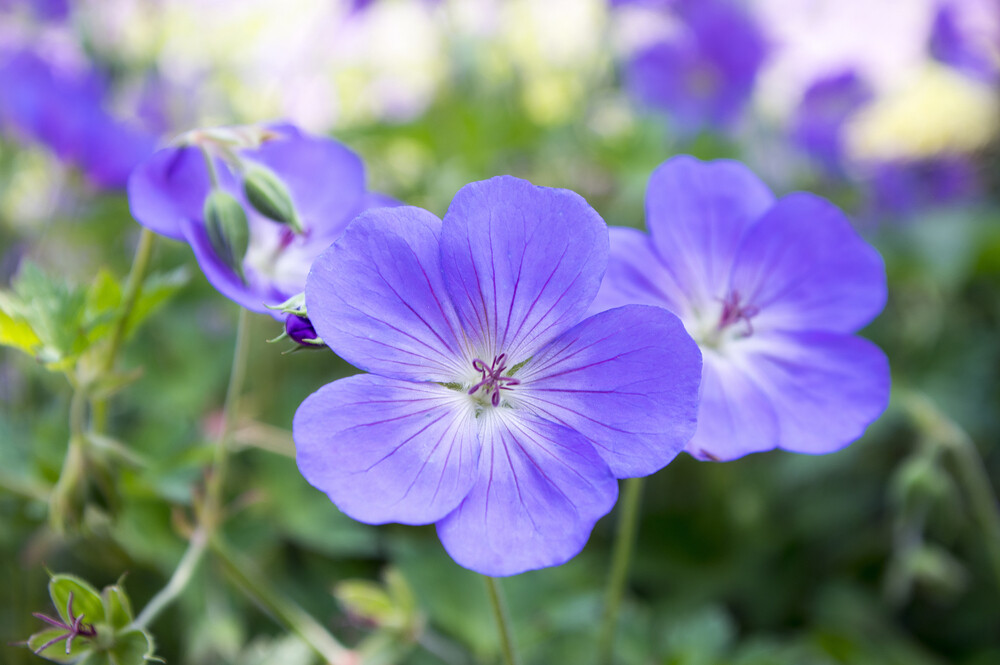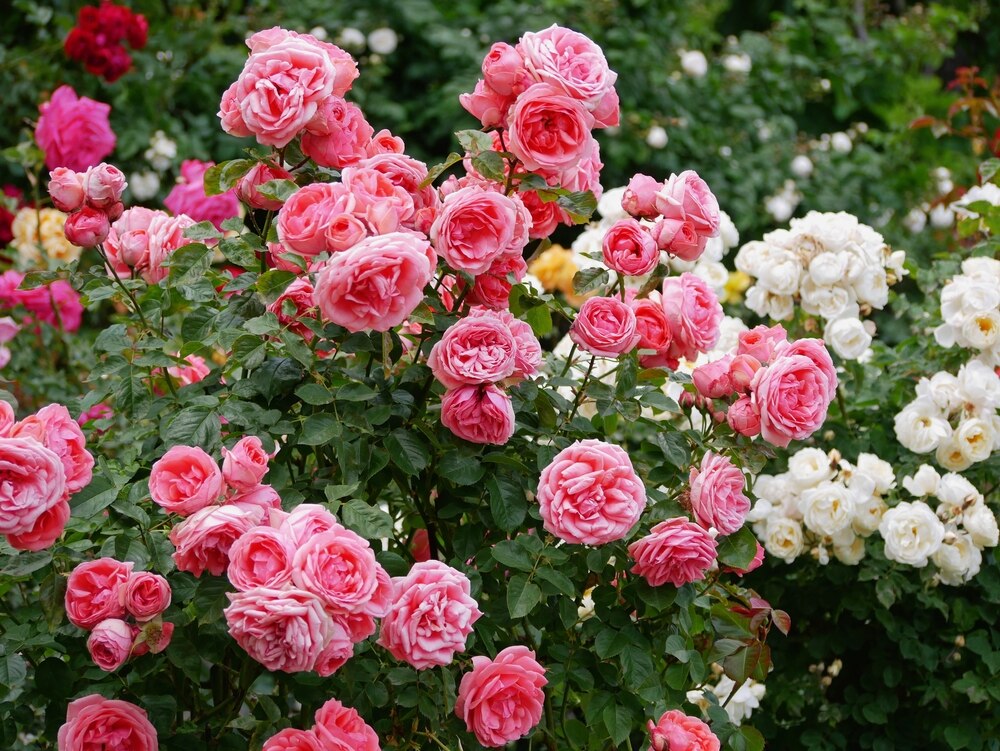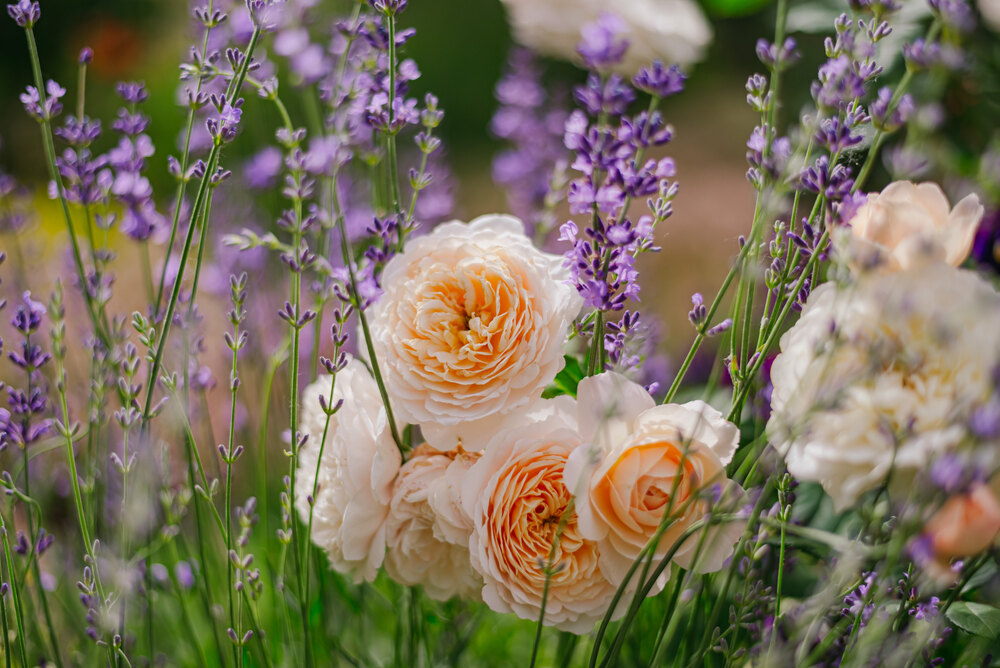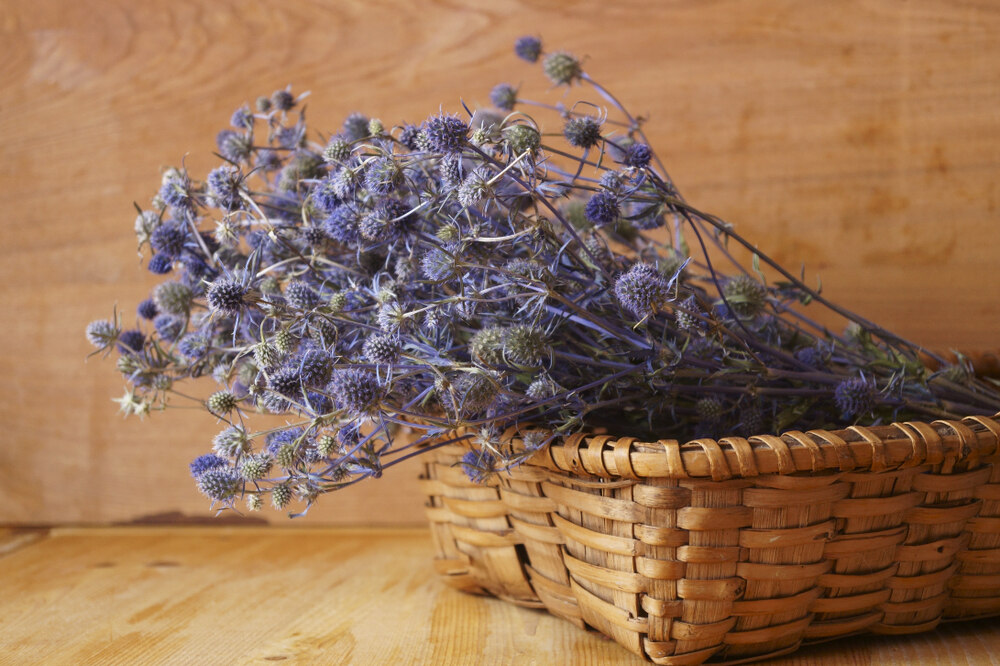Creating a beautiful flower bed is both an art and a science. With the right combination of plants, you can achieve a visually stunning, low-maintenance, and seasonally dynamic garden that will thrive in UK conditions. The design you’ve created, featuring Hydrangea Annabelle, Lavender Hidcote, Ilex and Yew balls, and Geranium Roxanne, is a fantastic mix of texture, structure, color, and bloom cycles. In this blog post, we’ll explore how to implement this design, what types of gardens it’s suitable for, and offer alternative plant suggestions for gardeners who may want to tweak the look.
The Aesthetic: Balanced Elegance with a Relaxed Feel
The flower bed design you’ve proposed works beautifully due to its balance of structured elements and softer, more romantic blooms. Let’s break down the aesthetic layer by layer:
- Back Layer: Hydrangea Annabelle
- Color and Texture: Positioned at the back, Hydrangea Annabelle offers large, soft, white blooms that last from mid-summer to autumn. Their dome-shaped flower heads add height and volume to the bed, creating a lush and inviting feel.
- Structure: Although Hydrangeas have a somewhat bushy, informal shape, their sheer size and mass make them a perfect backdrop for more delicate plants in front. The blooms also subtly draw the eye upward, adding vertical interest.
- Middle Layer: Lavender Hidcote
- Color and Contrast: In the middle, the vibrant, aromatic purple spikes of Lavender Hidcote contrast beautifully against the white of the Hydrangeas. Lavender also introduces a more formal element with its neat, compact growth habit.
- Scent and Sensory Appeal: Lavender brings an extra layer to the garden through its scent, which adds a sensory element that many gardens lack. Bees and butterflies are also drawn to Lavender, enhancing the garden’s ecological impact.
- Front Layer: Ilex and Yew Balls
- Structure and Formality: At the front of the bed, the structured Ilex and Yew balls offer strong, geometric forms. This contrasts with the looser planting behind and adds a formal touch that grounds the design, making it suitable for gardens that lean towards both formal and cottage styles.
- Ground Cover: Geranium Roxanne
- Softness and Color: Geranium Roxanne fills the gaps between the evergreen balls, offering a delicate splash of blue-violet flowers that last from spring through autumn. Their sprawling growth habit helps soften the rigid lines of the Ilex and Yew balls, while also preventing weed growth.
Garden Suitability: Where This Design Shines
This design is versatile enough to suit various types of UK gardens, from small urban courtyards to larger country estates. Here’s how it fits into different garden styles:
- Cottage Gardens: The blend of relaxed, informal blooms with structured evergreens makes this design ideal for cottage-style gardens. The balance of softness from the Hydrangeas and Geraniums with the neatness of the Lavender and evergreens creates the quintessential English garden look.
- Formal Gardens: The Ilex and Yew balls add an element of formality to the design, making it a good fit for more structured, formal garden spaces. In formal settings, this bed can act as a border or a standalone feature that combines order with natural beauty.
- Urban Courtyards: For small urban gardens or courtyards, this design provides seasonal interest and year-round greenery in a limited space. The compact nature of Lavender and Geraniums, combined with the evergreens, ensures that the bed remains visually appealing even when some plants aren’t in bloom.
- Coastal Gardens: This bed can also thrive in coastal gardens, as Lavender Hidcote is highly tolerant of drought and salty winds. Hydrangea Annabelle does well in sheltered coastal spots, while Ilex and Yew are hardy choices that can withstand the challenging coastal climate.
Implementing the Design in a UK Garden: Step-by-Step Guide
Step 1: Site Selection and Soil Preparation
To ensure the success of your flower bed, selecting the right site and preparing the soil are crucial steps. All of the plants in this design prefer well-drained soil and a good balance of sun and shade.
- Location: Choose a site that receives partial to full sun. Hydrangeas prefer partial shade, while Lavender thrives in full sun. A location that provides morning sun and afternoon shade works well for this design.
- Soil Preparation: Hydrangeas and Geraniums prefer slightly acidic to neutral soil, while Lavender thrives in slightly alkaline conditions. If your soil is heavy clay or poorly drained, consider amending it with compost, well-rotted manure, or horticultural grit to improve its structure and drainage.
Step 2: Planting the Back Layer – Hydrangea Annabelle
- Spacing: Plant Hydrangea Annabelle approximately 1 to 1.5 meters apart to allow for full growth. These plants can reach up to 1.5 meters in height and spread, so give them ample space at the back of the bed.
- Planting Depth: Dig a hole that’s twice as wide and just as deep as the root ball. Place the Hydrangea in the hole and backfill with soil, ensuring that the root ball is level with the surface of the soil.
Step 3: Planting the Middle Layer – Lavender Hidcote
- Spacing: Space Lavender Hidcote plants about 30-45 cm apart. Lavender tends to spread as it grows, so leaving enough space will prevent overcrowding and ensure good air circulation.
- Planting Depth: Similar to the Hydrangea, dig a hole that’s twice as wide and as deep as the root ball. Lavender needs well-drained soil, so add grit or sand to the bottom of the hole if needed to improve drainage.
Step 4: Planting the Front Layer – Ilex and Yew Balls
- Positioning: Arrange the Ilex and Yew balls at the front of the bed, evenly spaced to create a neat and formal look. Depending on the size of the balls, space them approximately 60 cm apart.
- Planting Depth: Dig a hole large enough to accommodate the root ball, ensuring that the top of the root ball is level with the soil surface. Backfill with soil and firm down gently.
Step 5: Filling the Gaps with Geranium Roxanne
- Spacing: Plant Geranium Roxanne between the Ilex and Yew balls, spacing them about 45 cm apart. Geraniums will spread to fill the gaps, so don’t worry if they appear a little sparse at first.
- Planting Depth: As with the other plants, ensure the top of the root ball is level with the soil surface.
Step 6: Mulching and Watering
After planting, apply a 5-7 cm layer of organic mulch around the plants to help retain moisture and suppress weeds. Water the plants thoroughly after planting and continue to water regularly, especially during dry spells in the first year while the plants establish themselves.
Plant Care and Maintenance
Hydrangea Annabelle
- Watering: Hydrangeas need regular watering, particularly during dry spells. Keep the soil consistently moist but not waterlogged.
- Pruning: Prune lightly in late winter or early spring, removing dead or damaged stems and cutting back old flower heads to promote new growth.
Lavender Hidcote
- Watering: Lavender prefers dry conditions, so avoid overwatering. Water only when the soil is dry to the touch.
- Pruning: After flowering, trim Lavender back by about one-third to maintain its shape and encourage new growth. Avoid cutting into old wood, as Lavender may not regrow from this.
Ilex and Yew Balls
- Watering: Water regularly during the first year to help the evergreens establish a strong root system. Once established, Ilex and Yew are fairly drought-tolerant.
- Pruning: Prune once or twice a year to maintain the shape of the balls. This is best done in late spring or early summer.
Geranium Roxanne
- Watering: Water Geraniums regularly, especially during dry periods. They are drought-tolerant once established but prefer consistent moisture.
- Pruning: Deadhead spent flowers regularly to encourage continuous blooming. In autumn, trim back any leggy growth to keep the plants tidy.
Alternative Plant Suggestions for Different Looks
If you’d like to modify this design to suit different aesthetics or conditions, here are a few alternative plant suggestions:
- For a more formal look: Replace Geranium Roxanne with Heuchera for its compact, mounded form and richly colored foliage, which will maintain a more structured look at the front of the bed.
- For a more cottage-style feel: Swap the Ilex and Yew balls for Buxus (Boxwood), which offers a softer, more traditional English garden appearance. You could also consider adding Foxgloves for height and a more wild, naturalistic feel.
- For a low-maintenance garden: Substitute Hydrangea Annabelle with Spirea japonica, which requires less watering and is more drought-tolerant. You could also replace Lavender Hidcote with Catmint (Nepeta), which offers a similar look with even less care required.
A Garden for All Seasons
This flower bed design combines elegance and ease of care, making it suitable for a wide range of UK gardens. With its mix of structured evergreens, soft flowering perennials, and seasonally dynamic plants, this design will provide interest throughout the year. Whether you’re an experienced gardener or a beginner, this design is accessible and achievable, offering a timeless, beautiful garden feature that will thrive for years to come.
